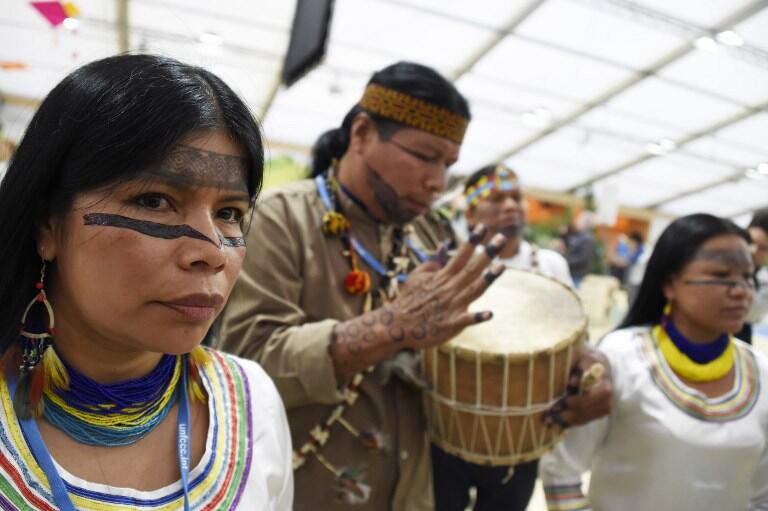The Nature Conservancy and the International Indigenous Peoples’ Forum on Climate change will host a panel a5 15:30 at the Global Landscape Forum concerning land rights of indigenous peoples and the tremendous pressure that extractive, hydropower and agricultural development projects are putting on natural landscapes and Indigenous and local community territories,
The respect and recognition of Indigenous Peoples’ rights, customary land tenure and traditional knowledge have significantly contributed to more sustainable use and management of various ecosystems.
This has been documented in a variety of studies and most recently in a report from the Rights and Resources Initiative (RRI) and the World Resources Institute (WRI) suggesting that indigenous peoples outperform every other owner, public or private in forest conservation.
There is ample evidence that government development plans and projects, private corporations’ investments have and are continuing to cause Indigenous Peoples’ criminalization, displacement and the depletion of resources.
Speakers at the session will represent both Indigenous Peoples’ organizations and corporate representatives to explore the crucial question: Is a triple-win – where the economy, people and the climate all benefit – possible, despite the many documented and potential conflicts.
Harboring some of the world’s most carbon-rich and undeveloped places, lands managed by Indigenous Peoples and local communities play a crucial role in stewarding the world’s natural carbon stores. Private sector interests in these landscapes create both enormous risks and opportunities for these communities.
A new study released this week at the COP21 by a collaboration of indigenous peoples’ groups from Africa, Latin America and Asia, and the Woods Hole Research Center and the Environmental Defense Fund reports that forests on indigenous territories store at least 20 percent of the carbon in tropical forests worldwide. Previous
research has shown that community forest rights that are legally recognized and protected by governments often translate into healthy forests with high forest carbon storage, and reduced deforestation. But achieving secure rights requires investments to strengthen legal protections and ensure their implementation, as well as to strengthen the capacity of local people to sustainably manage and benefit from forest resources.
Yet the obstacles are significant. A recent study of 64 countries suggests that indigenous peoples and local communities lack legal rights to almost three-quarters of their traditional lands, including forests.
In addition to carbon storage, secure community forest rights are known to produce a suite of other economic, social and environmental benefits, including reduced conflict, improved biodiversity and water regulation, increased job creation, reinvestment in local communities, and reduced out-migration, as well as avoided deforestation.
Protecting tropical forests on indigenous lands from clearing, burning, mining, unsustainable logging and other threats is not only important for preventing increases of atmospheric CO2, it is essential for maintaining other vital environmental services. Moreover, forest destruction can have devastating immediate environmental and health impacts, such as those caused by smoke and haze arising from forest clearing











